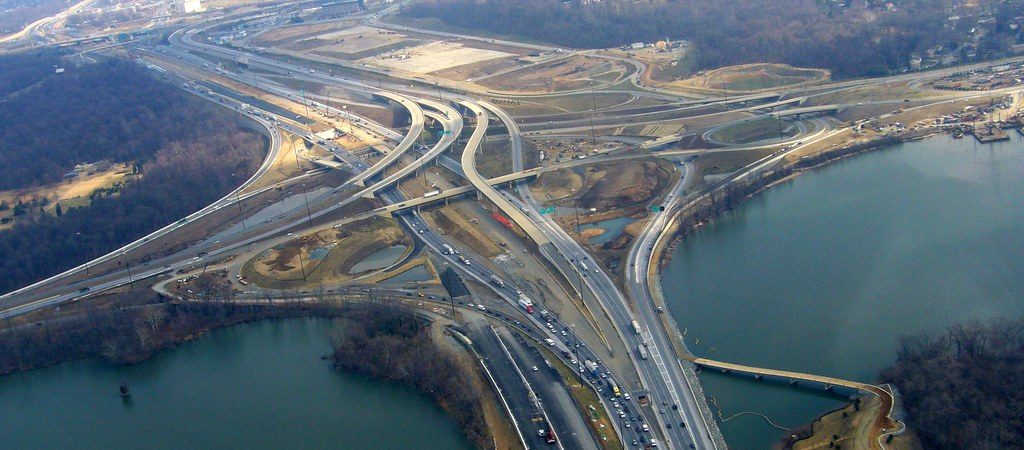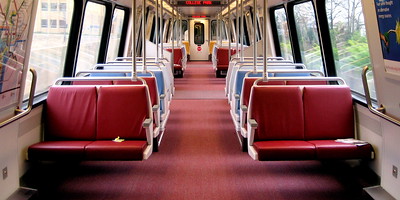Thursday, June 18th, 2020
Maryland Transit Administration & Regional Transit Plan Commission
6 St. Paul St.
Baltimore, MD 21202-1614
Re: Comments from Thirty Organizations on the Draft Regional Transit Plan for Central Maryland
Dear Maryland Transit Administrator Kevin Quinn and the Regional Transit Plan Commission,
Thank you for your leadership in the process to create a Regional Transit Plan that is vital to residents in the region. Public transit will always be a necessary service that keeps health care and other vital systems running both during a global pandemic and in the absence of one. The COVID-19 crisis has further reinforced that we need to make structural changes to our public transit system to address inequities and ensure that everyone has access to the important places in their communities. The Regional Transit Plan can address these deficiencies and can also serve as a critical tool to employ in the economic recovery of the region by both creating jobs and allowing people to get to jobs. Every $1 billion invested in transit supports and creates over 50,000 jobs. While the Draft Regional Transit Plan’s overarching goals are well-chosen, the plan should be improved to significantly address inequities that disproportionately impact people of color, people with disabilities and other marginalized communities and to set a higher bar to improve access, reliability, and protect our environment.
We, undersigned groups encourage you to strengthen this important plan by enacting the following measures:
- Improve access to frequent transit connected to employment centers for marginalized communities and reduce the number of disconnected communities. Everyone deserves to be able to travel to the places where they live, work, and play. Everyday, communities of color have disproportionately less access to critical destinations due to redlining and structural racism. The neighborhoods in Baltimore with the highest percentage of people traveling more than 45 minutes to get to work and also taking transit are predominantly Black communities. The plan should provide strategies and targets to substantially increase access to frequent transit service for communities of color and other marginalized communities to connect to employment centers. The plan should also reduce the census blocks with disconnected communities–communities where there is over 5% unemployment and over 20% of workers are commuting over 45 minutes to get to work.
- Improve the reliability and accessibility of transit for people with disabilities. Our public transit system must work for everyone. People with disabilities are disproportionately impacted by inadequate transit. The plan should significantly increase On Time Performance of Paratrasit and upgrade the percentage of stops and stations that are ADA accessible at a much faster pace than 25% every 10 years. The plan should also include strategies that provide users with better notification systems of vehicle arrival times and provide an analysis of the number of vehicles needed. It is important that the plan include measures to increase the number of wheelchair accessible vehicles and provide special funding for transit services for health care.
- All bus replacements should be for zero emission buses starting in 2024. We need to travel in ways that keep us and our planet healthy. Most of our buses run on diesel fuel that spew out pollution that makes us sick and exacerbates climate disruption. The plan should include a target and strategies that lead to the full transition to a zero-emission transit fleet by requiring that in 2024, all bus replacements be for zero emission buses. Each zero-emission bus reduces pollution as much as taking 27 cars off the road. This goal is achievable, needed to protect public health, and consistent with the goals of comparable jurisdictions. New York City is transitioning 100% of their fleet to electric by 2040.
- Provide faster service to reduce people’s commute times. If people are spending less time traveling each day, they can spend more time with their loved ones. If people can get from point A to B faster on public transit, they will use it more. Currently, people can reach fewer than 1 in 10 jobs in the Greater Baltimore region in less than 45 minutes on transit. While the draft plan recognizes that faster service is important, it does not offer concrete targets. The plan should set targets to substantially reduce peoples’ commute times.
- Provide concrete strategies to pay for the plan. Investing in public transit benefits communities across the region. If we want to see the benefits in the plan, we need to fund them. The plan should develop concrete strategies for identifying federal, state, and local funding and leveraging funding to meet the needs of the plan, with an emphasis on funding strategies in the next 5 years.
- The plan should have consistent short-and long-term goals for improving transit and details of what transit improvements will occur in early priority corridors. The plan should provide 5-year and 25-year targets for each objective: providing faster, more reliable service; growing ridership; increasing access to jobs and opportunities; improving the customer experience; being more equitable; and preparing for the future. MTA should include assessments on how strategies under these objectives will slow the growth of vehicle miles traveled (VMT) in the region and explain how the corresponding decline in greenhouse gas emissions aligns with the Administration’s Greenhouse Gas Reduction Act Plan. The draft plan does not offer consistent metrics; instead it uses different baselines and target years for different indicators. MTA should provide a baseline of current conditions so the public can understand how the conditions are being improved and so that improvements can be reliably monitored and measured. The plan should also outline what transit improvements will occur in early priority corridors identified in the plan and outline the corridors that MTA will study.
Thank you for your consideration of these proposed improvements. Please note the improvements outlined in this letter are by no means exhaustive but outline some of the key measures that should be improved.
Sincerely,
Niamh McQuillan, Co-Lead, 350 Baltimore and Climate Reality Project Baltimore
Klaus Philipsen, FAIA, ArchPlan
Liz Cornish, Executive Director, Bikemore
Nanci Wilkinson, Chair, Environmental Justice Ministry, Cedar Lane Unitarian Universalist Church
Steven Hershkowitz, Maryland Director, Chesapeake Climate Action Network
Gwen L. DuBois MD, MPH President, Chesapeake Physicians for Social Responsibility
Emily Ranson, Maryland Director, Clean Water Action
Jane Lyons, Maryland Advocacy Manager, Coalition for Smarter Growth
Floyd Hartley, Chair, CARS (Consumers for Accessible Ride Services)
Donald M. Goldberg, Executive Director, Climate Law & Policy Project
Eric Norton, Director of Policy & Programs, Central Maryland Transportation Alliance
Robin Murphy, Executive Director, Disability Rights Maryland
Lore Rosenthal, Program Coordinator, Greenbelt Climate Action Network
Liz Feighner, Hoco Climate Action
Richard Deutschmann, Climate Action Team Lead, IndivisibleHoCoMD
Joe Uehlein, President, Labor Network For Sustainability
Richard Willson & Lois Hybl, Co-presidents, League of Women Voters of Maryland
Henry Bogdan, Policy Director, Maryland Nonprofits
Rachel London, Esq., Executive Director, Maryland Developmental Disabilities Council
Kim Coble, Executive Director, Maryland League of Conservation Voters
Cecilia Plante, Co-Chair, Maryland Legislative Coalition
Josh Tulkin, Director, Maryland Sierra Club
Ronza Othman, President, National Federation of the Blind of Maryland
Timothy Judson, Executive Director, Nuclear Information and Resource Service
Cheryl Barnds, Rapid Shift
Mark Southerland, Ph.D.Legislative Director, Safe Skies Maryland
Diana Younts, Takoma Park Mobilization Environment Committee
Tafadzwa (Taffy) Gwitira, Founder and farmer, Tele Farm
Jimmy Rouse, Co-Founder, Transit Choices
W. Phil Webster, Unitarian Universalist Legislative Ministry of Maryland


